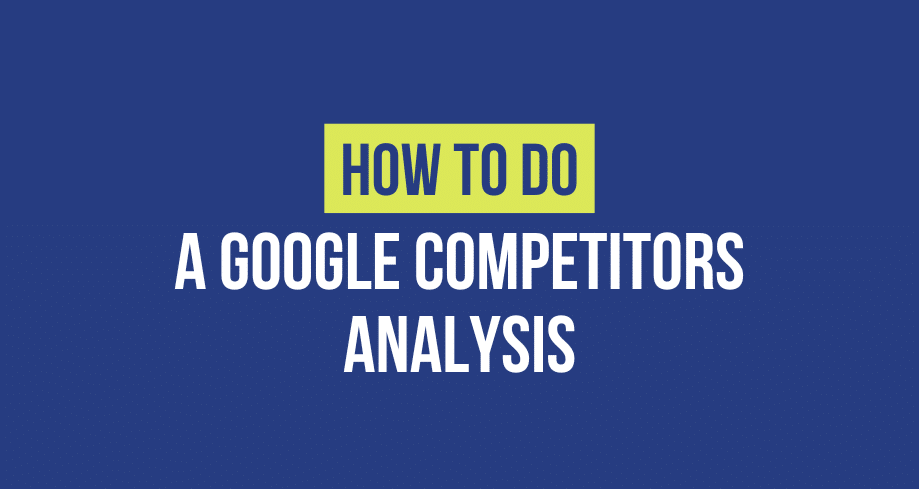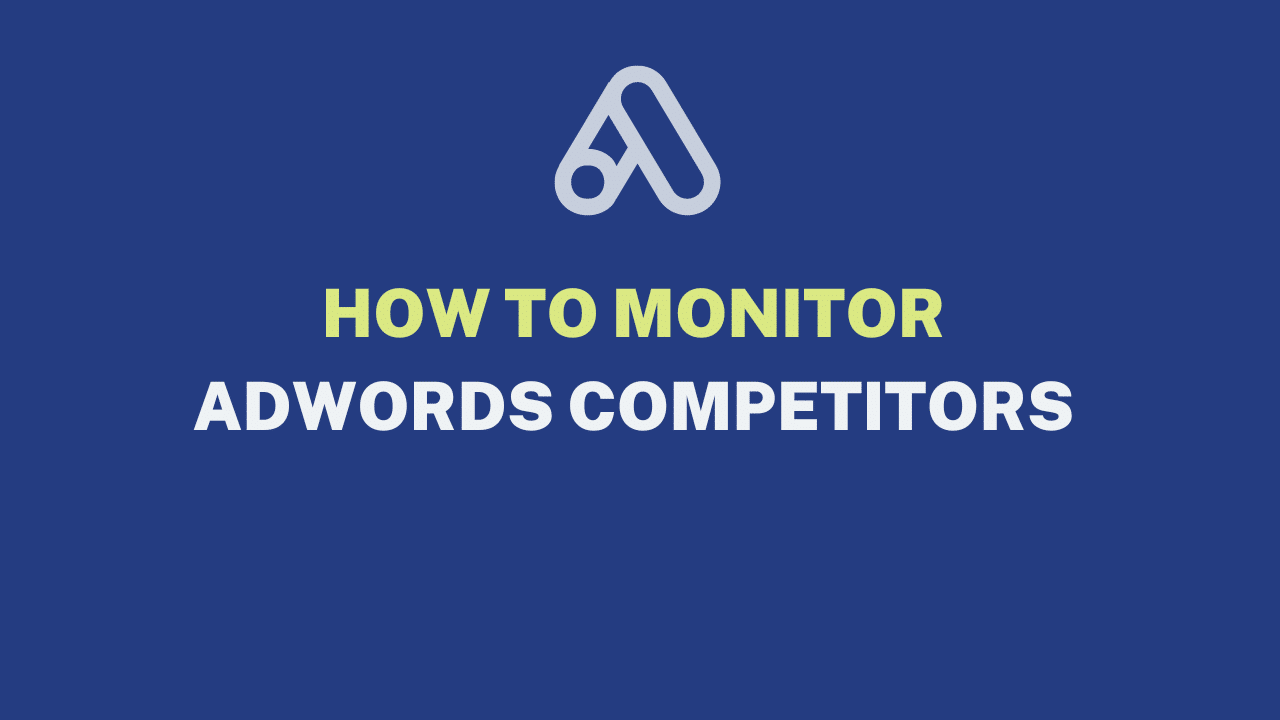Given the highly competitive world of online marketing, understanding your competitors is paramount to success. One of the most effective ways to gain valuable insights into your competition is through a Google competitors analysis. By examining and evaluating the strategies and tactics employed by your rivals, you can uncover opportunities, identify gaps in the market, and fine-tune your own approach to stay ahead.
Studying your competitors enables you to uncover untapped opportunities. By analyzing their strengths and weaknesses, you can pinpoint gaps in the market where your business can excel.
This blog post will explore the essential steps to conduct a competitor’s analysis. From identifying your key competitors to analyzing their websites, content, social media presence, and performance metrics, we will equip you with the tools and insights necessary to gain a competitive edge in the online marketplace.
1 What is a Google Competitors Analysis?
A competitor analysis is a systematic process of evaluating and studying the online strategies, tactics, and presence of your competitors to gain valuable insights and improve your own business performance. It involves analyzing various aspects of your competitors’ online presence, such as their website design, content, SEO strategies, social media presence, and performance metrics. It also includes paid search, advertising revenue, social media platforms, Google Play, Google search, Google Cloud services, and Google ads.
The primary purpose of conducting a competitor analysis is to understand how your competitors position themselves in the online marketplace. By examining their strategies, you can better understand their strengths, weaknesses, and unique selling propositions. This knowledge allows you to refine your own approach and develop strategies that differentiate your business and attract your target audience.
Data and insights play a crucial role in understanding competitor strategies. You can uncover valuable information about your competitors’ target keywords, storage and cloud solutions, customer engagement, content performance, backlink profiles, and overall online visibility through comprehensive analysis. By leveraging this data, you can make informed decisions and refine your strategies to gain a competitive advantage. A Google SWOT analysis in short.
2 Why is Google Competitors Analysis Important?
Significance of staying competitive in the online landscape
Competition is fierce. Staying ahead of the curve is vital for business success. A Google analysis helps you keep pace with evolving trends, customer preferences, and industry developments. It enables you to adapt your strategies and stay competitive in the ever-changing online landscape.
Identifying opportunities and gaps
An analysis provides valuable insights into your industry’s market gaps and opportunities. By examining your competitors’ strategies and offerings (hello Google Trends) you can identify underserved niches or areas where your business can excel. This allows you to tailor your products, services, and marketing efforts to meet the needs of your target audience more effectively.
Improving your own online presence
By studying your competitors’ online presence, you can learn from their successes and failures. Analyzing their websites, content, and SEO strategies can provide inspiration for enhancing your own online presence. You can identify best practices, optimize your website for better user experience, harness the best blogger tools to create compelling content, and implement effective SEO techniques to improve your rankings and visibility.
3 Identify Your Key Competitors
Identifying your key competitors is the first step in conducting a competitor analysis. It is important to identify both direct and indirect competitors within your industry. Here are some key points to consider:
- Direct competitors are those businesses that offer similar products or services to the same target audience. Indirect competitors may not offer the same products or services but target the same customer needs or compete for the same online visibility.
- Conduct keyword research to identify the keywords relevant to your industry. Look for businesses that consistently rank for these keywords.
- Stay updated with industry news, blogs, and forums to identify emerging players and trends. Look for businesses that are gaining traction and attracting attention within your industry.
4 Analyze Competitor Websites
Website Design and User Experience
Analyzing competitor websites for design and user experience is crucial to understanding their online presence. Consider the following points:
- Importance of analyzing website design and usability: A well-designed and user-friendly website can enhance the overall user experience and increase engagement.
- Evaluating user experience: Assess competitor website navigation, layout, and organization. Look for ease of use, intuitive design, and clear calls to action.
- Overall website appeal: Evaluate competitor websites’ visual aesthetics, branding consistency, and overall appeal.
Content Analysis
Analyzing competitor content provides insights into their messaging, engagement levels, and content strategies. Focus on the following aspects:
- Significance of analyzing competitor content: Content plays a crucial role in attracting and engaging online audiences.
- Assessing content quality: Look for well-researched, informative, and engaging content that resonates with the target audience.
- Evaluating relevance: Analyze how competitor content aligns with industry trends, customer needs, and search intent.
- Measuring engagement levels: Pay attention to metrics such as comments, social media shares, and backlinks to assess content engagement.
SEO and Keyword Analysis
Analyzing competitor SEO strategies helps identify opportunities and improve your own organic search performance. Consider the following:
- Importance of examining competitor SEO strategies: SEO directly impacts search visibility and organic traffic.
- Analyzing keywords: Identify the keywords targeted by competitors and compare them with your own keyword research. Look for keyword gaps and potential opportunities.
- Assessing meta tags: Evaluate competitor meta tags, including title tags and meta descriptions, to understand their optimization strategies.
- Analyzing on-page optimization techniques: Look for optimization tactics such as keyword placement, header tags, and internal linking on competitor websites.
Social Media Presence and Engagement
Studying your competitors’ social media presence provides insights into their engagement levels, content strategies, and audience interactions. Consider the following:
- Relevance of studying competitor’s social media presence: Social media is a powerful platform for brand awareness, engagement, and customer acquisition.
- Analyzing social media strategies: Evaluate competitor content types, frequency of posting, and overall messaging.
- Assessing content engagement: Look at likes, shares, comments, and follower growth to gauge the level of audience engagement.
Backlink Analysis
Analyzing competitor backlinks helps you understand their link-building strategies and identify potential opportunities for your website. Consider the following:
- Significance of backlinks for SEO: Backlinks are crucial for search engine rankings and authority.
- Methods to analyze competitor backlinks: Use tools like Ahrefs or Moz to identify competitor backlinks. Analyze the quality, relevance, and diversity of their backlink profiles.
- Look for opportunities: Identify potential websites or domains where your competitors have acquired backlinks and consider contacting those sources for similar opportunities.
Performance Metrics and Analytics
Monitoring competitor performance metrics and utilizing analytics tools provide valuable insights into their online success. Consider the following:
- Importance of monitoring competitor performance metrics: Metrics help gauge competitor strategies’ effectiveness and identify improvement areas.
- Relevance of tools like Google Analytics: Utilize tools like Google Analytics to analyze competitor website traffic, user behavior, and conversions.
- Compare metrics: Compare your own performance with competitors to identify gaps and potential areas for improvement.
5 Tools for Conducting a Google Analysis
When performing an analysis, various tools and resources can assist you in gathering valuable data and insights. Here are some popular options:
- SEMrush: SEMrush is a comprehensive SEO and competitor analysis tool. It provides keyword research, backlink analysis, organic search insights, and competitor research features. It offers both free and paid plans, with the paid plans offering more advanced features and data.
- Ahrefs: Ahrefs is a powerful SEO tool that offers in-depth competitor analysis, keyword research, backlink analysis, and content analysis features. It provides robust data on organic search traffic, keyword rankings, and backlink profiles. Ahrefs is a paid tool with various pricing plans.
- SimilarWeb: SimilarWeb provides insights into website traffic, audience demographics, referral sources, and competitor analysis. It offers a free version with limited features and a paid version that provides more detailed data and insights.
- BuzzSumo: BuzzSumo is a content analysis tool that allows you to identify the most popular content in your industry and analyze competitor content performance. It helps you understand what types of content resonate with your target audience. BuzzSumo offers both free and paid plans.
- Google Alerts: Google Alerts is a free tool that allows you to monitor mentions of your competitors and industry keywords. Set up alerts to receive notifications whenever new content or news related to your competitors is published.
While these tools provide valuable data and insights, it’s important to note that they have limitations. Free versions may have limited features and access to data, while paid versions can be costly for some businesses. Additionally, no tool can provide a complete analysis independently, and it’s crucial to supplement the data with manual research and analysis.
6 Interpreting and Applying the Analysis Results
Once you have gathered the data and insights from your Google competitor’s analysis, it’s important to interpret and apply them effectively. Here’s how:
- Interpretation of gathered data: Analyze the collected data to identify patterns, trends, and key findings. Look for strengths, weaknesses, and opportunities for improvement among your competitors.
- Align analysis findings with your business goals: Compare the analysis findings with your own business goals and objectives. Determine how the insights can be leveraged to address challenges, capitalize on opportunities, and align with your strategic direction.
- Utilize the acquired knowledge: Apply the knowledge gained from the analysis to enhance your marketing strategies. Incorporate successful tactics observed from competitors into your own campaigns. Identify gaps in the market and differentiate your offerings to attract your target audience.
- Continuous monitoring and adaptation: Competitor analysis is an ongoing process. Continuously monitor your competitors, industry trends, and consumer behavior to adapt and refine your strategies accordingly. Regularly update your analysis to stay informed about new competitors and evolving market dynamics. See how you do on search engines, even streaming services.
7 Frequently Asked Questions
Why is it important to conduct a Google competitor analysis?
Conducting a Google competitor analysis is important for several reasons. Firstly, it helps you understand the competitive landscape within your industry, allowing you to identify your competitors’ strategies and tactics. This knowledge enables you to make informed decisions, refine your own approach, and stay ahead of the competition. Additionally, a competitor analysis helps you identify market opportunities and gaps, allowing you to position your business strategically and offer unique value propositions.
What tools can I use to perform a Google competitor analysis?
There are several tools available to perform a Google competitor analysis. Popular options include SEMrush, Ahrefs, SimilarWeb, BuzzSumo, and Google Alerts. SEMrush and Ahrefs offer comprehensive competitor analysis features, including keyword research, backlink analysis, and organic search insights. SimilarWeb provides website traffic and audience analysis, while BuzzSumo focuses on content analysis. Google Alerts, on the other hand, allows you to monitor mentions of your competitors and industry keywords.
How often should I conduct a Google competitor analysis?
The frequency of conducting a Google competitor analysis depends on various factors, including the industry, market dynamics, and the level of competition. In general, conducting a competitor analysis at least once every quarter or whenever there are significant changes in the market or your business landscape is recommended. This ensures that you stay updated with your competitors’ latest strategies, emerging trends, and new players entering the market.
Conclusion
A Google competitors analysis is not just an option but necessary for businesses aiming to thrive and succeed in the digital world. It lets you stay informed, adapt to market changes, and make data-driven decisions that drive your business forward. So, start conducting your Google competitor analysis today and unlock the power of understanding your competitors to achieve your business goals. By understanding your competitors’ strategies, tactics, and online presence, you gain valuable insights that can inform your marketing efforts and help you stand out.





